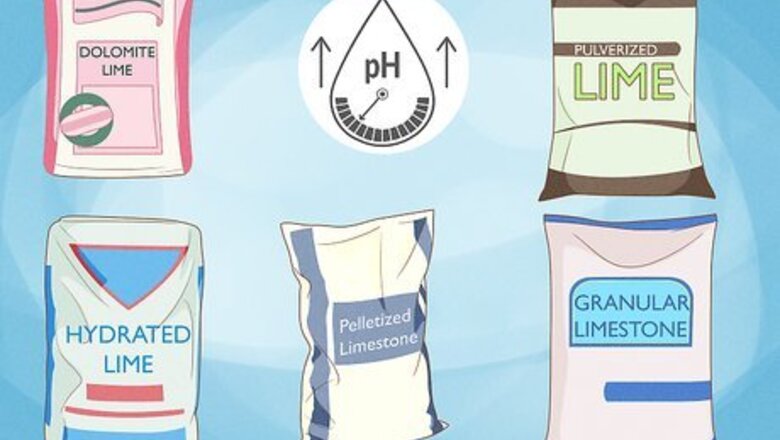
views
- If your soil pH is too low, add lime or wood ash to raise it.
- If your soil pH is too high, add organic materials, sulfur, or aluminum sulfide to lower it.
- Till the soil and mix the material of your choice into the topsoil. Continue watering the soil and re-check the pH levels as needed.
Increasing the pH
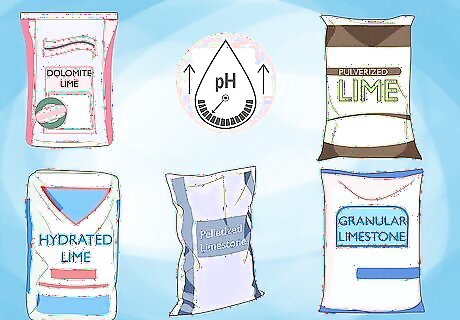
Add a liming material to your soil to quickly raise pH. Raise the pH of your soil by adding a base. The most common solution is to use a lime-based material. Standard lime comes in four types: pulverized, hydrated, granules and pellets. Depending on your soil type and the texture you’re aiming for, lime may be perfect for you. Pulverized lime is finely ground and more easily absorbed by the soil. However, it is more difficult to spread because it can clog the applicator. Granular and pelletized lime are easier to spread. However, it is not as effective at altering the soil pH. Hydrated lime should only be used with extremely acidic soils since it is more water-soluble and can quickly increase a soil’s pH. Some lime products contain additional micronutrients like dolomite, which is a mixture of calcium and magnesium carbonates. These are a great option if your soil is also missing some key nutrients!
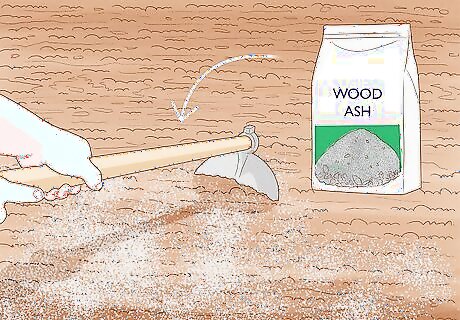
Mix wood ash into the soil to also remove impurities. The ash of burned trees is quite basic and contains micronutrients like calcium, potassium, phosphate, and boron. It also absorbs waste in your soil, which is great if your soil has been neglected. However, wood ash doesn’t change pH as fast as lime, so it may not be right for you if you’re in a rush. Wood ash works well in sandy soil because it breaks down and mixes with the sand particles over time. You can burn wood yourself and collect the ash, or purchase a wood ash fertilizer.
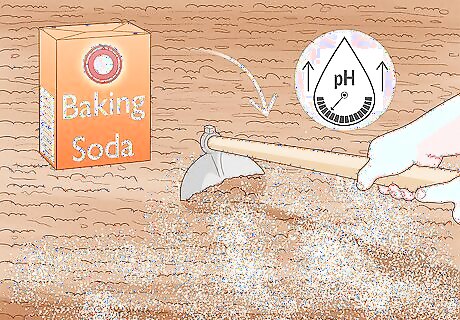
Choose baking soda if you’re worried about harming plants. Some plants can be a little sensitive to wood ash and lime, so just use baking soda if you don’t want to irritate anything you’ve already got growing in your garden or yard. Baking soda will slowly increase pH without your plants even noticing anything has changed. Add pulverized eggshells to the baking soda if you’d also like to increase the calcium levels.
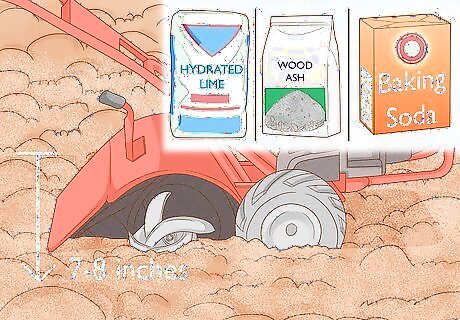
Mix the liming source in the soil 2-3 months before planting. In order to get the best results, till the liming material into the soil about 2-3 months before planting in the fall or winter. This will give you plenty of time for the soil pH to change and for you to remeasure it. Till the lime, ash, or baking soda into the soil’s root zone, which is 7–8 inches (18–20 cm) below the surface of the topsoil. You can apply the lime by hand if you have a small enough piece of land. You can also use a spreader to apply liming material to a yard. You can use a rake or a rototiller to work the liming material into the soil.
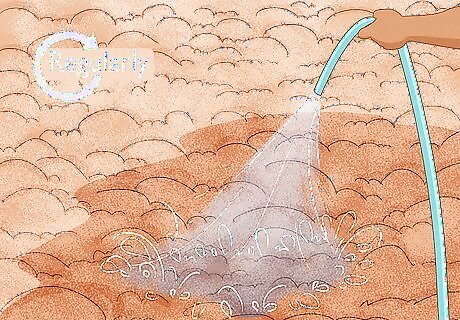
Water the soil regularly after increasing the pH. Lime will have little effect on dried out soil, so apply water regularly. Water activates the lime and helps it seep into the soil. Use a garden hose or sprinkler to apply water every other day or so until your soil pH reaches your preferred level. Don’t water if you’ve already got moist soil. Overwatering can leech other minerals out of the soil.
Decreasing the pH
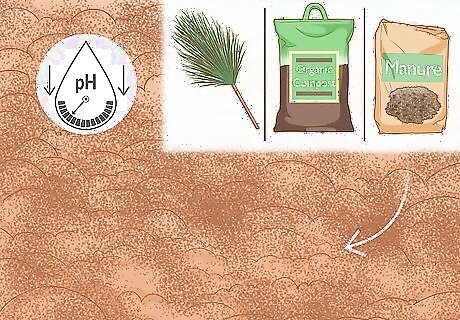
Use organic materials to slowly and consistently lower pH. Over time, any organic matter you add to the soil will lower the pH. This includes pine needles, compost, and manure, all of which will keep your soil happy and healthy. Just know, this can take years to completely repair the soil pH. Still, it’s a great option if you aren’t in a rush and you prefer organic gardening. Organic matter is also useful for improving a soil's drainage and aeration.

Add sulfur to the soil to efficiently lower pH. Sulfur is a consistent and proven solution to decrease pH. The sulfur won’t change the pH over night, but it’ll help balance out your soil’s acidity safely over time. The increase in acidity is due to a biological reaction involving bacteria.
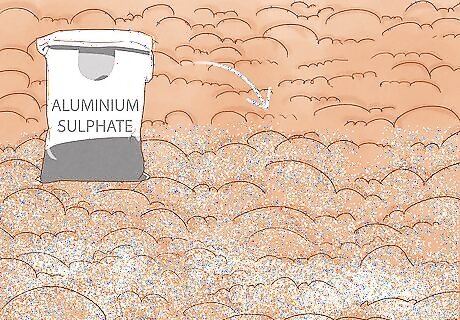
Add aluminum sulfate to lower the pH quickly. This compound instantly makes the soil more acidic due to a chemical reaction involving aluminum. This makes aluminum sulfate an attractive option if you’re trying to fix the soil as fast as possible. However, because it alters the pH of the soil so quickly, it can be more difficult to control the soil acidity, so don’t overdo it! Because aluminum sulfate creates a chemical reaction in the ground, some farmers and gardeners are less inclined to use it over organic materials.
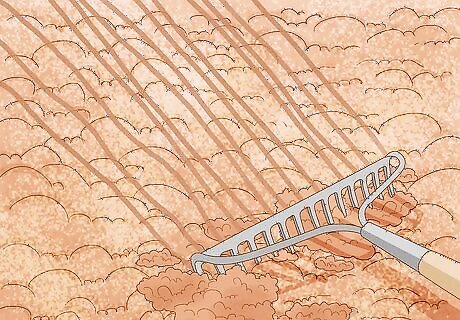
Till the material into the soil by hand. Mix the organic compounds, sulfur, or aluminum sulfate into the soil so that it can begin reacting. Organic compounds may require multiple applications depending on how high the pH is. Test the soil before reapplying.
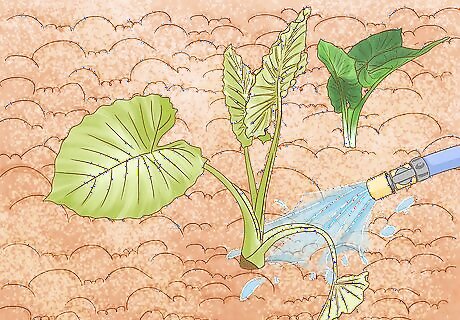
Water any plants after applying the material. If the sulfur or aluminum sulfate gets on the leaves of your plants, you will need to rinse it off with a hose. Otherwise, simply water any existing plants to help flush any excess acid. Continue reapplying the material and testing your soil until you’ve got a reasonable soil pH.
Evaluating Your Soil
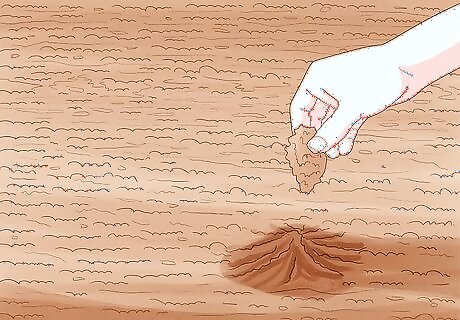
Identify the type and texture of your soil. Before you test your soil or add anything to it, determine what type of soil you have. Examine your soil to see if it’s clumpy, dry, lose or wet. Then, assess what kind of material is in your soil, such as sand, loam, clay, or muck. This will give you some clues about what altering the soil may entail. Well-drained and loose soil will be easier to adjust. On the other hand, compacted soil that has a lot of clay in it will be more difficult to change. Determining your soil type will help you figure out the best method for applying any materials to it.
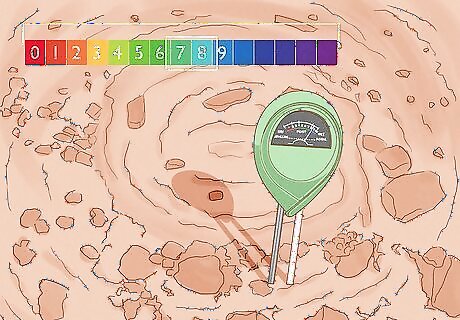
Leave your soil alone if the pH is around 7, which is neutral. A soil's pH represents how acidic or alkaline it is. Soil pH is determined on a scale from 0 to 14, with 7 being a neutral pH that is neither acidic nor alkaline. Anything over seven is alkaline and anything below seven is acidic. Most plants prefer a pH between 6 and 7.5. That’s also true for earthworms and microorganisms, which help your plants. A range of 6-8 is considered acceptable for most plants, although certain specialized plants require higher or lower pH levels. If your soil is way too acidic, plants will die as the roots get fried in the toxic soil. If the soil is too alkaline, they may not get the nutrients and minerals they need to thrive.
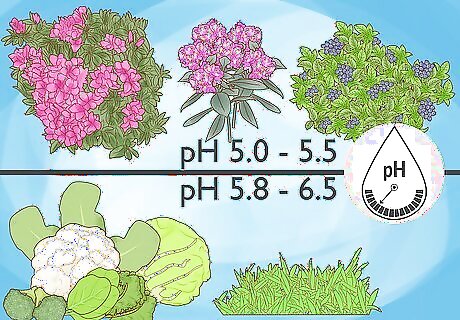
Research the soil pH preferences of the plants you’re growing. The type of plants you intend to grow will determine what soil pH level you need. Many plants prefer a more acidic soil, particularly flowers and some fruit plants like blueberries. Research what the recommended pH levels are for the plants you want to grow. Azaleas, rhododendrons, blueberries and conifers like acidic soils (pH 5.0 to 5.5) Vegetables, grasses and most ornamentals prefer slightly acidic soils (pH 5.8 to 6.5)
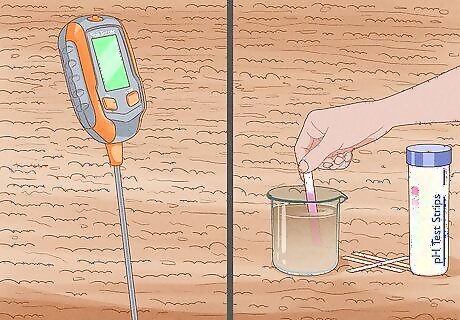
Test the soil’s pH with a digital probe or test strips. Once you have an understanding of soil pH and the type of soil you are dealing with, test it. You can buy a commercial test and send it into a lab, or just test the soil yourself with a digital probe or test strips. The easiest way to test your soil is to dig a hole, fill it with water and then insert a test probe into muddy water. There are also some DIY methods that involve making your own pH test strips, although you’ll get much more accurate readings if you use a product designed for this.
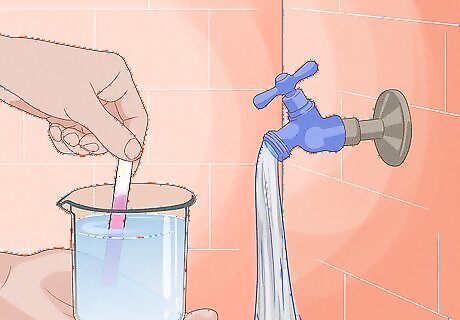
Test your water’s pH to see if that’s the core issue. If your soil appears to be healthy but you’re still having problems keeping plants healthy, it could be the pH of your water. Groundwater, the water used in most homes and gardens, tends to be more alkaline. However, rainwater tends to be more acidic. Use water testing strips to assess the pH of your water. If your water is the problem, you can either start buying pH-balanced water for your plants, or adjust the soil to compensate for the especially high or low pH of the water.















Comments
0 comment